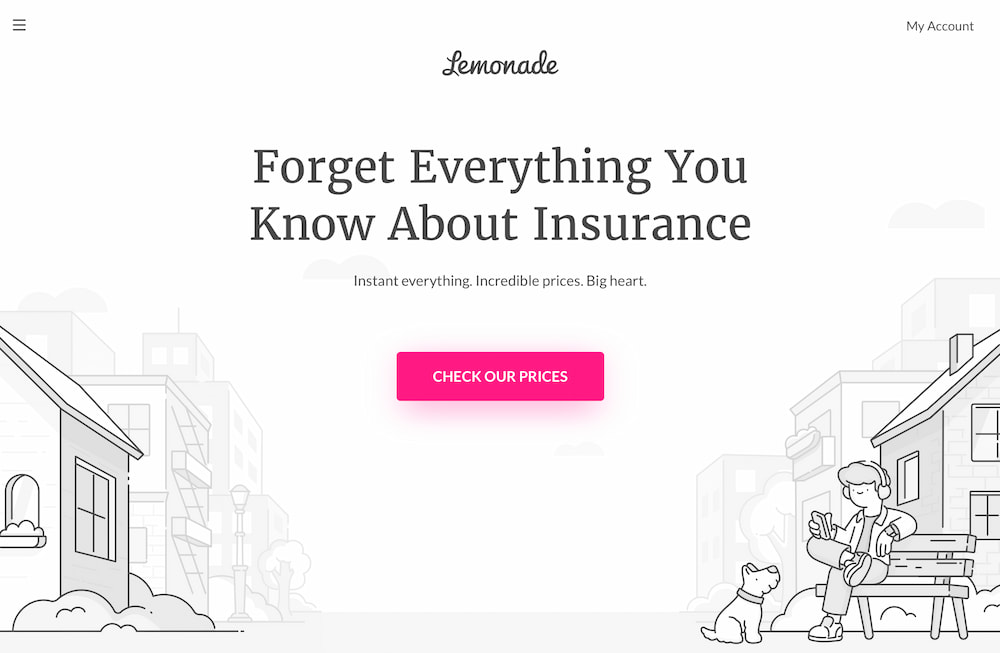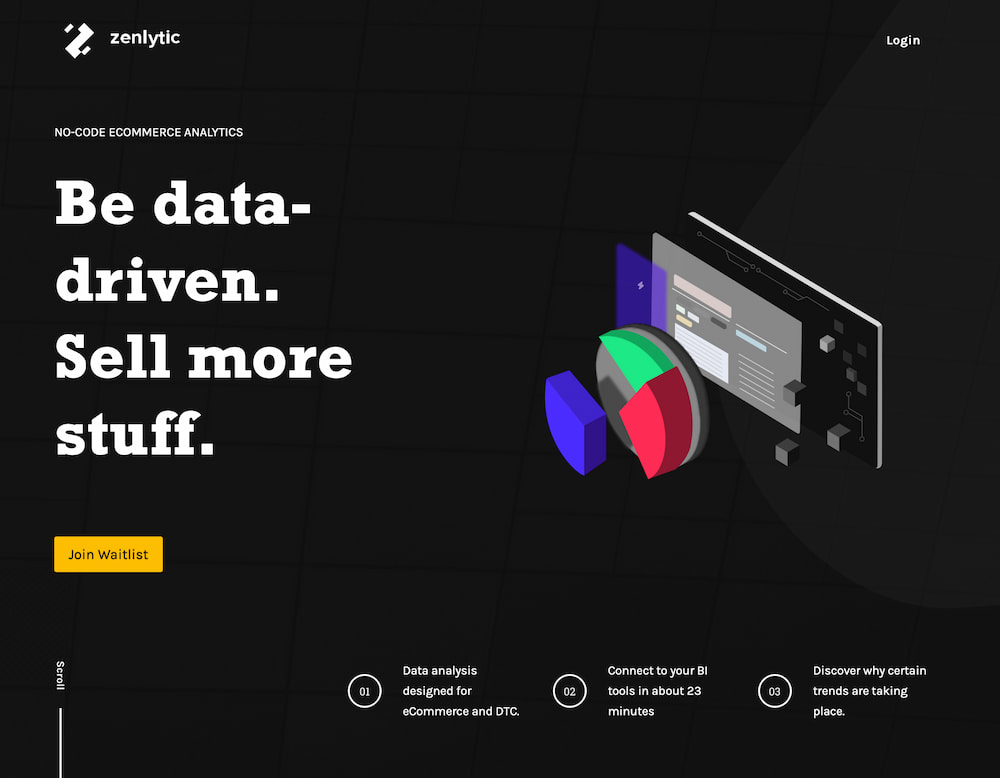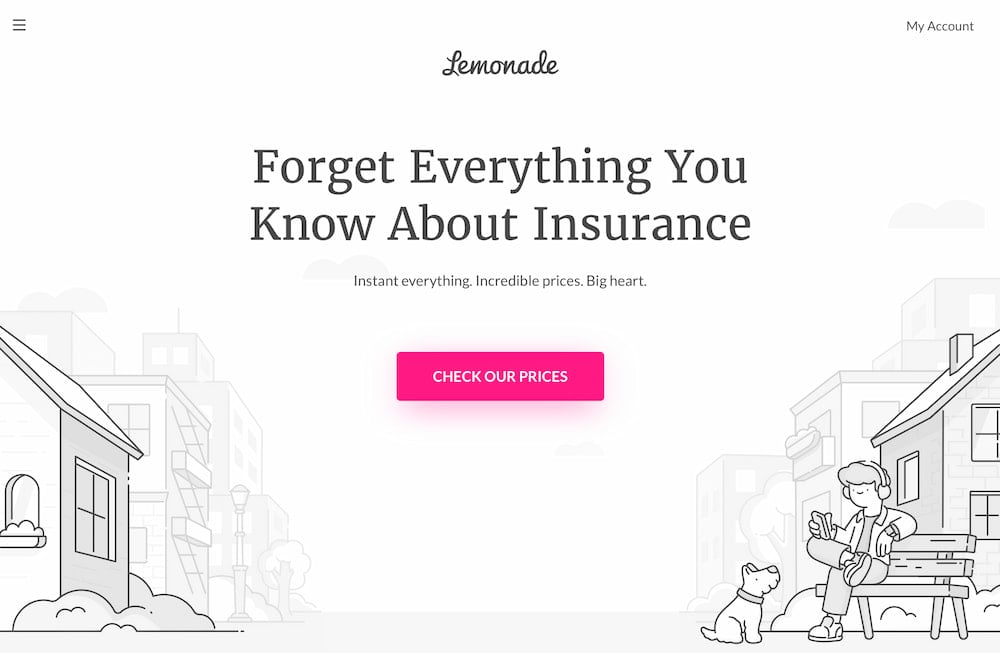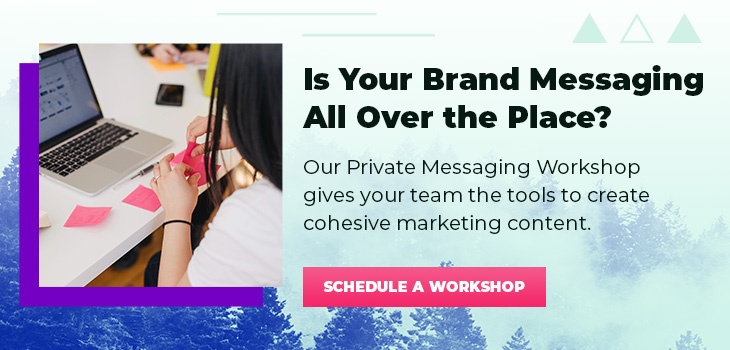I just spent $90 on a crew neck sweatshirt. I blame brand messaging.
Before you shake your head in disgust and judgment, don't worry; both my wife and financial advisor already disowned me. But this blog is not about my questionable purchasing decisions; it's about how the right message can transform an ordinary commodity into a must-have product that your customers will pay top dollar to have.
I don't care what industry you're in, what service you provide or what product you sell. Your brand message will determine how much business you win — and lose.
Per the StoryBrand Framework (the simplest methodology for developing an effective brand messaging), people only buy products after they read words that make them want to buy that product. And those words must — for those in the back who can't hear: MUST — clearly address your customer's problems. As soon as you stop doing that, customers stop paying attention.
People only buy products after they read words that make them want to buy that product.
So, that brings us to the end of our intro, and probably where I should land the plane and tell you where this is going. We're going to break down the foundational elements of a winning marketing message using the ancient and foolproof method of story. You will soon understand the way people think, what information they’re looking for, and how to appeal to their most basic needs and wants — and ultimately be able to use messaging to win yourself a lot more business.
Is Your Marketing Message Slowly Killing Your Brand?
Have you ever had a conversation with someone who just couldn’t get to the point? You probably wished you could walk away mid-sentence, so you didn’t have to keep waiting to find out why their never-ending tale had any relevance to your life. Although this isn’t a polite option in real life, people can easily click away from your brand online if your message isn’t clear and direct.
An effective marketing message creates an immediate desire to do what you’re asking customers to do. It’s clear, concise and compelling, so your audience doesn’t have to spend one extra second trying to figure out who you are or what you do. Think about the Nike tagline “Just do it.” This is a simple, clear message that gives people that extra boost of confidence to stop overthinking things and just attack their goals. And those three words, along with the company name, are some of the most famous lines of copy ever penned.
Without a clear message, your brand will confuse people instead of intriguing them. If people don’t know who you are, what problem you solve, or how it makes their life better, they have absolutely no reason to pay attention to you. And if there’s too much extra information around your brand, you'll become that friend who never gets to the point, and your customers will tune out.
When crafting a brand message to support your marketing strategy, you must focus on how you can help your customers and what they need to do to get the solution to their problem. As you start to craft and revise your winning statement, it’s also important to keep in mind the key characteristics of a great marketing message.
📺 Check out this interview with our Marketing Manager, Ashlee Rolkowski on how winning marketing messages work.👇
The Anatomy of a Winning Marketing Message
Clear
Clarity is key no matter your industry, product or message. Without a clear statement, customers are left wondering why they should do business with you. Your marketing message should directly address how your product can help solve your customer's problem and improve their life.
You can use three easy steps to clarify your message.
- Tell the customer what you offer and how it helps them. If you’re selling orthotic shoe inserts for people with plantar fasciitis, you can focus your message on how your inserts relieve pain and restore their wellbeing. This clearly communicates what you offer and aligns with what your customers want.
- Address how your product will make your customer’s life better. Once you’ve shown that you can offer what customers want, you need to show them how it will help. For the orthotic inserts, you could include a message like, “Stop letting pain hold you back. With inserts designed for pain relief, you can get back to doing what you love.”
- Tell customers how to buy your product. No matter how intriguing your website is, if people can’t find the “buy now” button, they won’t purchase your product. Make sure you clearly state what people need to do to opt into your services, be it a clear call to action button on every page or detailing a simple three-step process for setting up an appointment. Just remember to keep it brief and make it easy.
Concise
How often do you read the entire web page when you’re searching for information online? Probably never. This goes for your customers too. According to Donald Miller, author of Building a StoryBrand, people won’t work hard to find information because it burns too many calories that could be used on more important things. This is why people tend to skim large blocks of text instead of reading it closely. And it's why you need to make sure your message is concise. So when you're setting out to describe your product, think about keeping the length similar to a social media post instead of a legal document.
A message that gets to the point is one that engages customers. Some brands use commanding messages, such as Subway’s “Eat fresh,” and others show the results of using their service like Walmart’s tagline “Save Money. Live Better.” Think about what you do for your customers and see if you can boil it down to one short sentence that represents your brand.
Compelling
Just because messages need to be clear and concise doesn’t mean they have to be boring. In fact, the more you can jazz up your message and make it memorable, the more effective your marketing campaign will be. But don't mistake "be compelling" for "use big words, exaggerate and say too much."
The way to be compelling is to use precision and specificity in what you say. The more you can voice exactly what your customer is dealing with, their desires and their pain points, the more interested they will be.
You want your message to make people curious, create an emotional connection, and get them to take the next step in the purchasing process, whether it’s reading more about your product, scheduling an appointment or buying your product. A compelling message will spark a sense of urgency in your customers and get them excited to be a part of your brand.
You may think your brand is just not compelling by nature. I vehemently disagree. To prove it, let's look at one of the weirdest products on the market — FridaBaby’s Snotsucker.
“It’s Smart. It’s Swedish. It’s maybe a little strange. It’s the doctor-invented nasal aspirator that actually works!”
If you’ve ever passed one in the grocery store, then you’ve seen the cartoon image of a mom holding one end of the apparatus in her mouth with the other end in a baby’s nose. That’s because it’s exactly what it sounds like: a device for parents to suck snot out of their child’s congested nose. Instead of giving it some complicated, scientific name and description, FridaBaby went with the device’s most basic appeal and made a 'compelling,' funny message for their product that appealed to their target market.
Aligns with your brand voice and tone
The Snotsucker works for FridaBaby because it aligns with the brand’s overall direct and cheeky approach to baby products. When you’re thinking of clever ways to express your marketing message, you need to make sure it matches your brand voice. This helps to create consistency across your entire brand and shows that all of your products and services fit together.
If your brand messaging doesn’t align with your voice, it can create confusion for your customers. For example, if you’re a graphic design service that focuses on professional industries such as law offices, banks or medical practices, a message like “Our designs are so sick, they should be illegal” would be problematic because it doesn’t reflect your professionalism or appeal to your target audience. You want to craft a message that fits your overall marketing plan and accurately represents how you want to be perceived, whether you're a small business hoping to get bigger or a large business maintaining your reputation.
Brilliant Marketing Messages and Why They Work
Some brands hit a homerun with their marketing communication, and you can use them as guides while you figure out where your own marketing sweet spot is. One of these marketing message examples is Lemonade, an online insurance company that boasts incredible prices.
When you pop onto Lemonade’s site, the first thing you see is their message: “Forget Everything You Know About Insurance." It's relevant, simple, and immediately creates intrigue.
Then a subtext to elaborate and create contrast from what the traditional insurance experience is like: "Instant everything. Incredible Prices. Big Heart.”
Lastly, a big CTA button you can't miss that says “Check Our Prices.” So the instant a potential customer reaches their website, they know what to do, why Lemonade is unique, and how to buy — all from only fifteen words.
 Their message is undeniably concise and even addresses people’s three biggest grievances about insurance — it's a time-sucking hassle, it's expensive, and it's emotionless. Have you ever thought of your insurance company as having a heart? Now you have! Lemonade has effectively tied in a sort of mission statement to their marketing. The message is compelling even down to its design. The bright pink colors and bold command front and center grabs your attention and makes you think about insurance differently.
Their message is undeniably concise and even addresses people’s three biggest grievances about insurance — it's a time-sucking hassle, it's expensive, and it's emotionless. Have you ever thought of your insurance company as having a heart? Now you have! Lemonade has effectively tied in a sort of mission statement to their marketing. The message is compelling even down to its design. The bright pink colors and bold command front and center grabs your attention and makes you think about insurance differently.
Lemonade leaves no room for their customers to wonder why they should use their services. They get right to the point and clearly communicate how they’re different and the benefits of working with them with eye-catching headlines and a simple website design that lets the message shine.
Another great example of a powerful marketing message is Zenlytic, which provides “No-code ecommerce analytics.” This line paints a clear picture of who their tool is for and what they offer their customers: easy analytics solutions for ecommerce brands. The headline on their webpage then addresses what customers ultimately want, and what Zenlytic offers to help them get there: “Be data-driven. Sell more stuff.”
To add even more value, Zenlytic includes a few user benefits that showcase their differentiation:
- Data analysis designed for eCommerce and DTC. This reiterates the product use and the ideal user.
- Connect to your BI tools in about 23 minutes. This addresses a time-related pain point using common language for analysts.
- Discover why certain trends are taking place. As we learn on the rest of the site, understanding 'why' revenue shifting is invaluable to analysis as opposed to only seeing 'what' changed.
Lastly, their site leaves no doubt in a user's mind about what they need to do: Join Waitlist. Depending on what you need your prospective customers to do, this button might have something like a phone number to call, an email or a link to your step-by-step guide of how to buy.
 In just a few words, Zenlytic has set themselves apart, identified a problem, given an action step, and provided a solution for the customers. You could even go so deep as to look at their wording, which is casual and blunt to both grab attention and make it clear the customer needs no special knowledge. Has coding been keeping you away from getting ecommerce analytics? Not anymore. What do business owners want? To sell their stuff. Plain and simple.
In just a few words, Zenlytic has set themselves apart, identified a problem, given an action step, and provided a solution for the customers. You could even go so deep as to look at their wording, which is casual and blunt to both grab attention and make it clear the customer needs no special knowledge. Has coding been keeping you away from getting ecommerce analytics? Not anymore. What do business owners want? To sell their stuff. Plain and simple.
Both of these websites also include a few testimonials at the bottom of their web pages. This technique is easy to add to your marketing message strategy and can help you build trust in new products by including reviews from A-list industry 'celebrities' or companies. People want to be part of the group and they might be naturally wary of your marketing techniques, so displaying other customer's experiences can act almost as a value proposition for your company.
Get Your Message Right to Build Trust and Sales
Creating a winning marketing message helps you build trust between prospective customers and your brand. By being clear, concise and compelling, you let them know right away who you are and how you can help them. When you remove all the clutter around your message, you make it easier for customers to identify with your brand and see the solution you offer. Addressing the customer’s needs and making them the hero of your message is a simple, effective, time-tested way to convert prospects into sales.
Want more about how to write a marketing message that just works? Check out our article on how we use the StoryBrand framework to sell any product.








